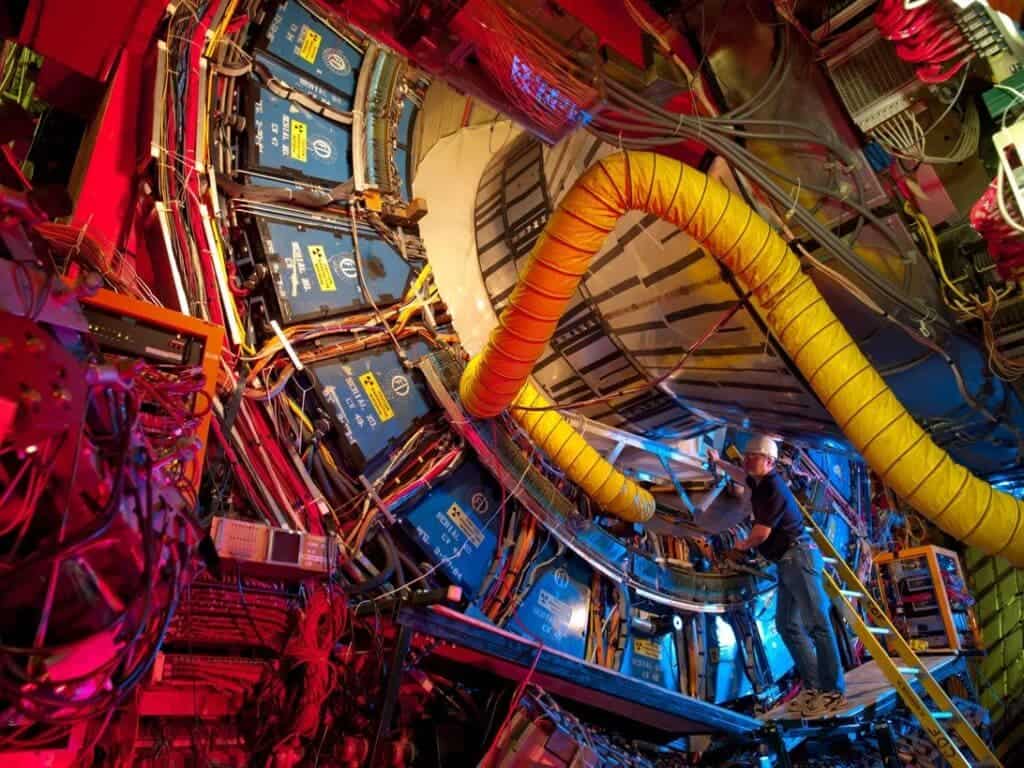
The Standard Model of particle physics is a theory that attempts to classify all the subatomic particles in the world — basically the building blocks of matter — as well as the interactions between them. This overarching model has served physicists well in the past, helping them set up novel experiments to hunt for new particles. But now the Standard Model is in quite the predicament.
Physicists armed with 10-years worth of precise measurements have found that the elusive W boson has a slightly higher mass than predicted. The difference is tiny but in the world of particle physics, nothing is left to chance. This means that the Standard Model may be in for a massive overhaul.
“It’s not just something is wrong,” said Dave Toback, a particle physicist at Texas A&M University and a spokesperson for the U.S. government’s Fermi National Accelerator Lab, which conducted the experiments. If the results are replicated by other labs elsewhere, “it literally means something fundamental in our understanding of nature is wrong.”
There are basically two main classes of fundamental particles per the Standard Model. There’s fermions like electrons, protons, neutrons, and other leptons and quarks. These are the stuff that regular matter is made of. Then there’s bosons, photons, and gluons — the so-called force carriers because they don’t make up stuff but rather transmit forces.
There are four fundamental forces in the Universe that we are currently aware of: the strong force, the weak force, the electromagnetic force, and the gravitational force. All of these forces work over different distances with different strengths.
You may have heard of the Higgs boson, the fundamental particle associated with the Higgs field, which gives mass to other fundamental particles such as electrons and quarks. Predicted by the Standard Model for decades, the Higgs boson was discovered only in 2012 by physicists at CERN to much fanfare.
The W boson, on the other hand, is the particle that transmits the weak force — which, despite the name, is only the second weakest force next to gravity — which is responsible for certain types of radioactive decay.

For many years, scientists have been smashing together protons and antiprotons at the now-defunct Tevatron accelerator at Fermilab. Although Tevatron shut down in 2011, scientists have only recently finished the challenging task of carefully compiling and analyzing all the measurements of the mass of 4 million W bosons, and what they found came as quite the shock.
According to these measurements conducted by a team of over 400 physicists, the mass of the W boson differs from that predicted by the Standard Model by 0.1%. That may sound like a rounding error, but at the infinitesimal scale of particle physics, that’s a huge difference. The Standard Model suggests that the W boson should measure a mass of 80,357,000 electron volts.
“We found it slightly more than that. Not that much, but it’s enough,” said Giorgio Chiarelli, a physicist from the Fermi team and research director for the Italian National Institute for Nuclear Physics, told AP. The physicists found that the W boson is actually heftier than predicted, coming in at 80,433,000 electron volts.
Previously, at another particle accelerator, physicists found that the W boson was actually lighter than predicted. So, this major discrepancy may simply be owed to something wonky about the experiment’s setup. This is why the Fermi physicists call for urgent new experiments.
But if the findings hold, the W boson will stick out like a sore thumb in the Standard Model, which means it has to be changed. The Standard Model was never perfect to begin with, by the way. It doesn’t account for dark matter and nor does it explain gravity, so it was never a complete model. We know for certain that dark matter exists, for instance, due to the gravitational effects it exerts on galaxies and other cosmic structures, so other particles must exist — but we have no evidence yet that may inform us what exactly these elusive particles might look like.
Until now, the Standard Model has served us very well. It hasn’t been proven wrong once, but it was always clear that it doesn’t have the ultimate last word because it doesn’t explain some of the most mysterious aspects of the universe. The W boson not having the predicted mass could mean that there is another particle that may have to be added to the Standard Model to account for the difference.
In other instances in life, the results of this experiment could be regarded as a failure. But this is science, and in science a result that deviates from expectation is, in fact, an opportunity for growth. Today’s holes in the Standard Model could help it become much more robust and rich tomorrow. Until then, scientists will be busy devising a new test for the W boson.
The new findings appeared in the journal Science.









